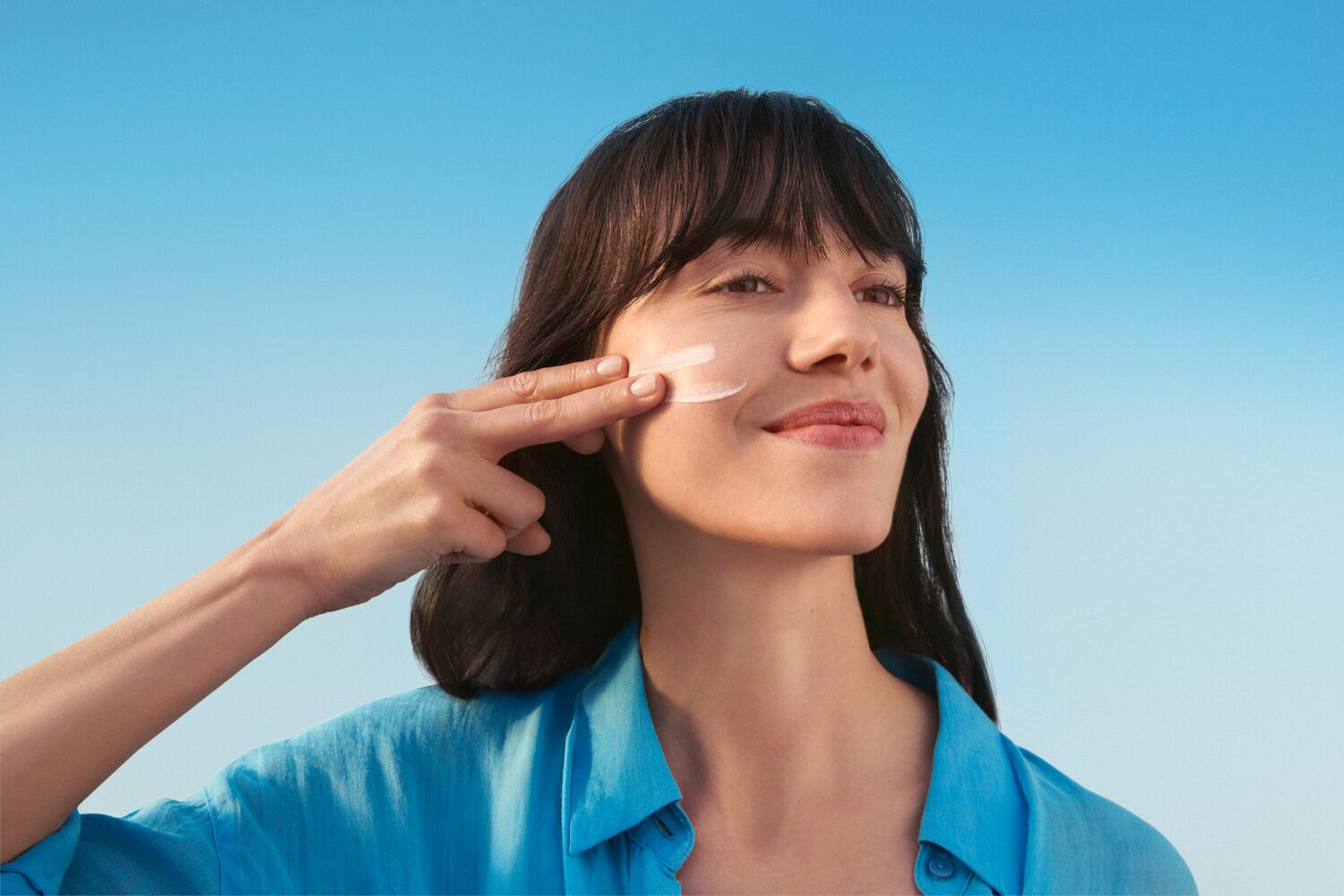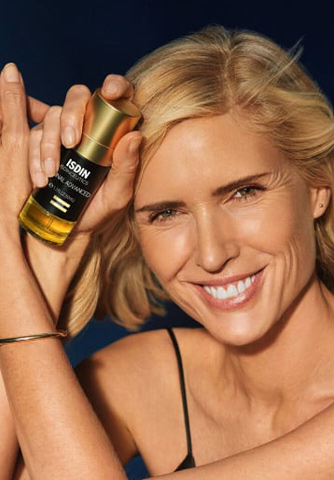Think of your skincare routine as a journey. One where each product is a stop along the way to your final destination: happy, healthy, beautiful skin. Already picked out your favorite spots? Perfect—but the itinerary is just as important: What goes first, eye cream or serum? And why is sunscreen always the last stop?
On your travels, the right skincare routine order helps you get the most out of each product, enhancing overall results. Luckily, you’ve found your roadmap. Whether you’re just getting started or reworking your morning and night skincare routine, this guide has you covered.
Table of Contents
The three golden rules of skincare order

1. Customize your routine to your skin type
Your skin is unique. Understanding its type—dry, oily, sensitive, or combination—helps you choose the right products to bring out its best.
Need a hand? Discover your skin type.
2. Match your products to the time of day
Your skin has its own circadian rhythm, making some products a better fit for your daytime routine, and vice versa. During the day, protect your skin from daily stressors such as pollution and UV rays. At night, shift your focus towards renewal and repair.
3. The order affects the outcome
In general, apply products from lightest to richest. Start with water-based and fluid formulas (like serums), then move to thicker ones (like creams or oils). Layering this way means:
- Lighter products absorb first
- Results-forward products, like eye creams and serums, get direct access to skin
- Creams and moisturizers help seal everything in
Morning skincare routine steps—what goes first?
Your morning routine prepares your skin for whatever the day brings—harsh weather, stress, and more. These steps help shield your skin while keeping it hydrated, bright, and balanced.

1. Cleanser
Start with a clean canvas. Cleansing in the morning removes overnight buildup and helps the following products do their best work. Opt for a gentle formula that supports your skin’s natural barrier.
2. Eye cream

Though often richer in texture, eye creams go before serums to offer targeted care for this delicate area. This order also helps shield your eye contour from more potent products to come.
Tip: The skin around the eyes is thinner than the rest of the face. To minimize tugging, gently pat your cream on using your ring finger.
3. Serum
Serums are best applied to clean, dry skin. How come? These high-performance allies are filled with hard-working ingredients, so applying them directly to a blank canvas helps maximize benefits.
In the morning, opt for antioxidant serums featuring vitamin C or E to brighten and defend against free radicals.
4. Moisturizer
This must-have not only helps to seal all the previous steps but also works to keep your skin barrier healthy, providing hydration and support.
Moisturizers also help minimize skin’s natural water loss throughout the day—something that’s harder for some than others.

5. Sunscreen
Giving it the last spot (or next-to-last if you wear makeup) helps sunscreen stay on the skin’s surface, maximizing protection.
The best part? Sun care is skincare. In fact, sun exposure is responsible for up to 80% of visible skin aging. To help protect your skin, look for a high SPF, broad spectrum sunscreen with antioxidants for added benefits.
Now for the most important part: Wear it every day, no matter the weather—solar radiation affects your skin indoors and outdoors year-round.
Remember: Daily sunscreen use helps to slow visible signs of aging and reduce skin cancer risk.
Nighttime facial routine—layering to reset and repair
Your skin goes into recovery mode while you sleep, so give it what it needs to maximize this restorative time. Turn to products that support your skin’s natural repair and renewal process.

1. Cleanser
Wash the day away—including makeup, sunscreen, and pollution. A thorough cleanse sets the stage for effective nighttime repair.

2. Eye contour
Your skin’s had a long day. And at night, it could use a little extra pampering—especially the delicate area around the eyes. Look for a nighttime eye cream that helps to detoxify and activate your skin’s antioxidant defenses, like one featuring melatonin.
3. Serum
At night, opt for formulas that promote skin renewal and repair, such as those containing retinal. This ingredient acts while you sleep to repair, rejuvenate, and combat the signs of skin aging (if you’re into that kind of thing).

4. Moisturizer
Give your skin an extra dose of recovery with a rich, nourishing cream. Choose one that complements your serum’s benefits, whether that’s hydrating or rejuvenating. Whichever your skin goal, bring your nighttime skincare routine to a close with a moisturizer that can both lock in hydration and help undo the day’s damage.
Remember: Daily sunscreen use helps to slow visible signs of aging and reduce skin cancer risk.
Personalize your skincare journey
Now that you’ve got the general route worked out, it’s time to make it your own. Ready to discover the best cleanser for your skin type? Or understand how moisturizers work? Whatever’s next, consider this your guidebook:

Your questions, answered
Where does exfoliation fit in my skincare routine?
This one depends on the purpose and format. Generally, you can apply leave-on exfoliants right after cleansing. Aim for one or two nights a week, depending on your exfoliant formula, skin type, and goals.
Can I wear makeup over sunscreen?
Definitely! Let your sunscreen absorb fully, then apply your makeup. Or choose a tinted SPF formula to streamline your routine.
I’m doing my skincare routine, but not seeing results. How come?
Skin changes take time—about 4–6 weeks for most products. Be patient and consistent, check for any ingredient mismatches, and when in doubt, consult the expert: your dermatologist.
It’s not about the destination

Your skincare routine is a lifelong journey—changing directions at times, rerouting for evolving needs. Our advice? Stick with it, enjoy the ride, and love your skin every day. Because happy skin is healthy skin, and healthy skin is beautiful.
Behind the blog:
Article written and reviewed by:
Amy is a content strategist who turned a part-time obsession with skincare into a full-time passion. Her experience as a creative storyteller includes a range of lifestyle and technology topics across Washington D.C. and Barcelona. What's in her travel bag? Eye contour cream and sunscreen, always.











